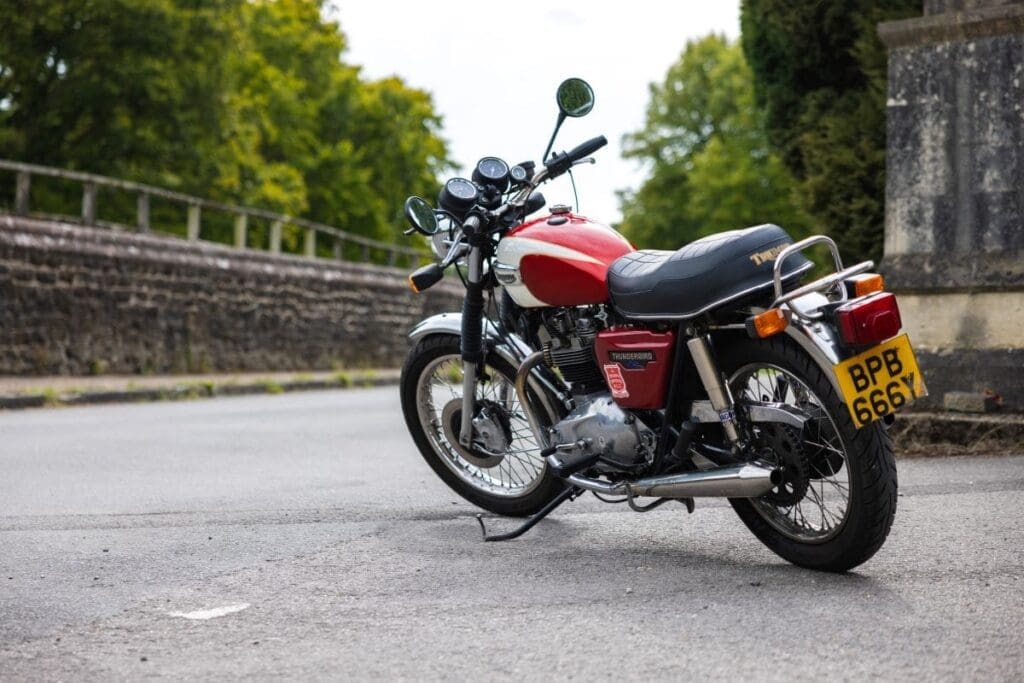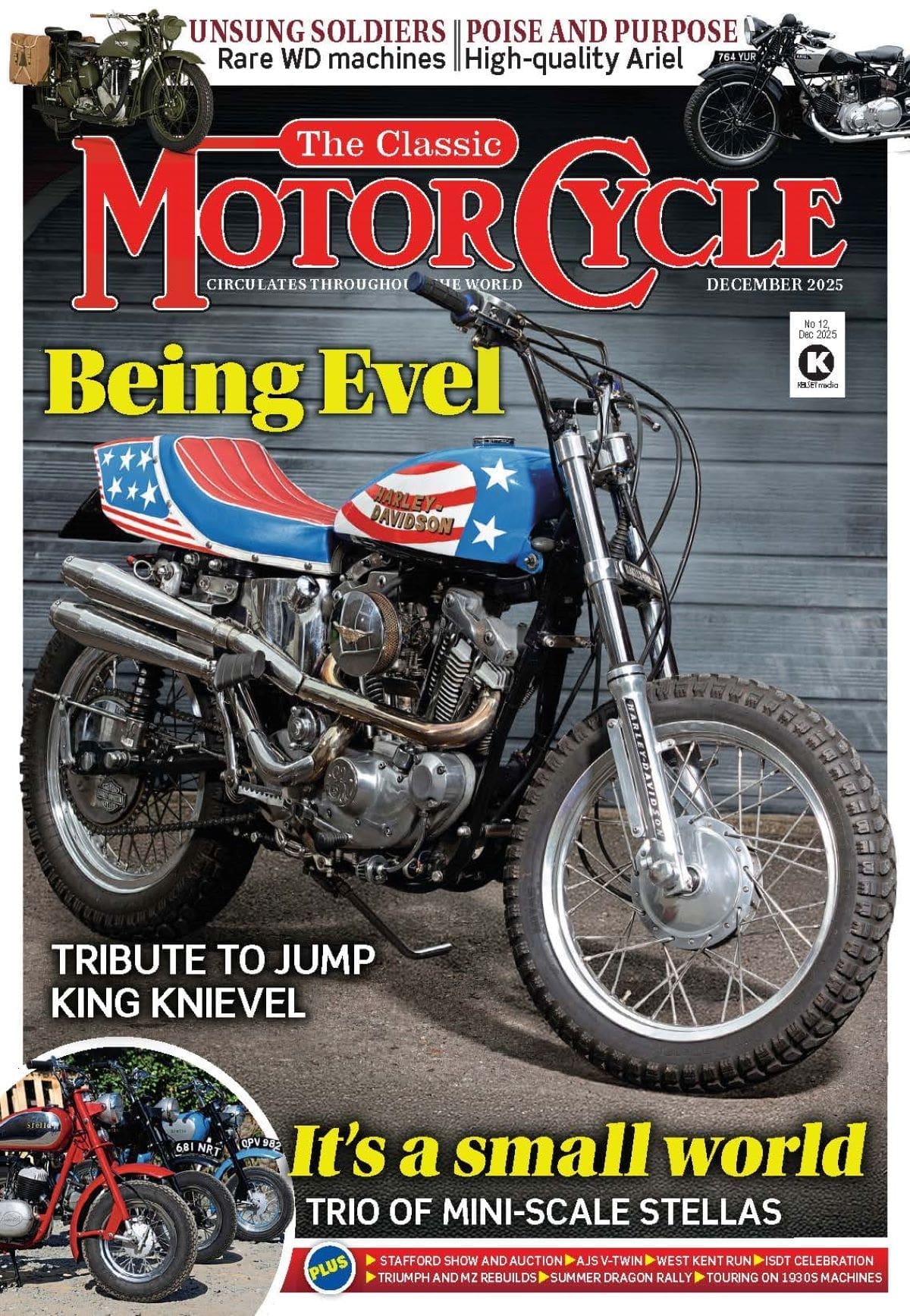This one-owner-from-new 1982 TR65 Thunderbird, with many unobtrusive improvements, has proved pretty reliable – and a delight to ride.
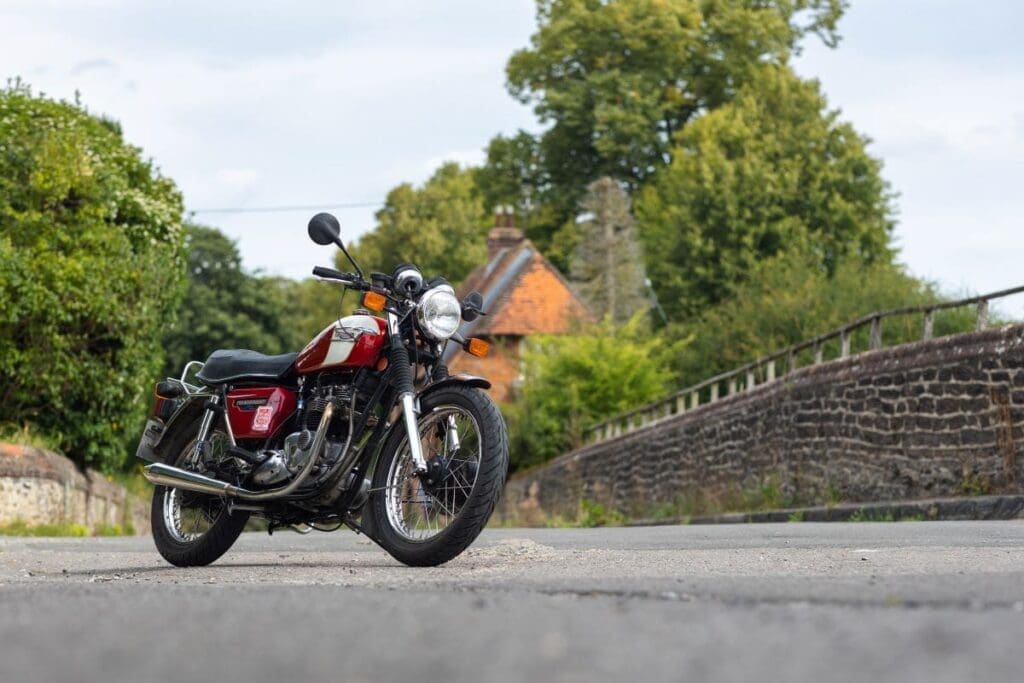
Words: Steve Wilson Photographs: Gary Chapman
“You know they say that the single carb Triumph Tiger is the thinking man’s Bonneville?” laughed Tim Ainslie. “Well, the TR65 Thunderbird is the thinking man’s Tiger!”
Tim may well have a point, but at this point, full disclosure: a) he’s a good friend of mine, who rebuilt the engine on my current 1972 T120R Bonnie; and b) I don’t need convincing about the 1980-82 Thunderbird 650s, as I owned one a few years back, and only traded it in to get my Guzzi V7.
Enjoy more The Classic MotorCycle Magazine reading every month.
Click here to subscribe & save.
Thunderfacts
These late 650s are something of a cult bike, partly due to the fact that only about 400 were built in the dying days of Meriden. They were originally offered as a budget twin, £200 cheaper than the 750cc T140 Bonneville; with a single carb, matt black siamezed exhaust system and primary case covers, drum rear brake, budget tyres, and a binnacle containing the ignition key and warning lights, to replace the rev counter.
Their 649cc capacity was achieved simply by reducing, via a modified crankshaft and shorter barrel, the 744cc’s stroke from 82mm to 71.50. This was also aimed at reducing the cost of insurance (though in fact the cut-off point for that turned out to be 600, not 650cc…)
What was also achieved, in a very British, almost inadvertent way, was a notable reduction in the vibration that had had to be lived with on the 750s. This was instantly perceptible; it took just one ride on the even rarer (only six produced) 650cc version of the Tiger Trail, belonging to Erum Waheed, the guru of both TR65s and the Trail models, to get me looking round for a Thunderbird to buy. Contemporary testers had noted it too.
Unfortunately in the 1980s, ‘650’ was not a fashionable capacity. So although the later, 1982 Thunderbirds came with a rev counter and chromed twin exhaust system, they did not sell well before Meriden’s end came, early in 1983.
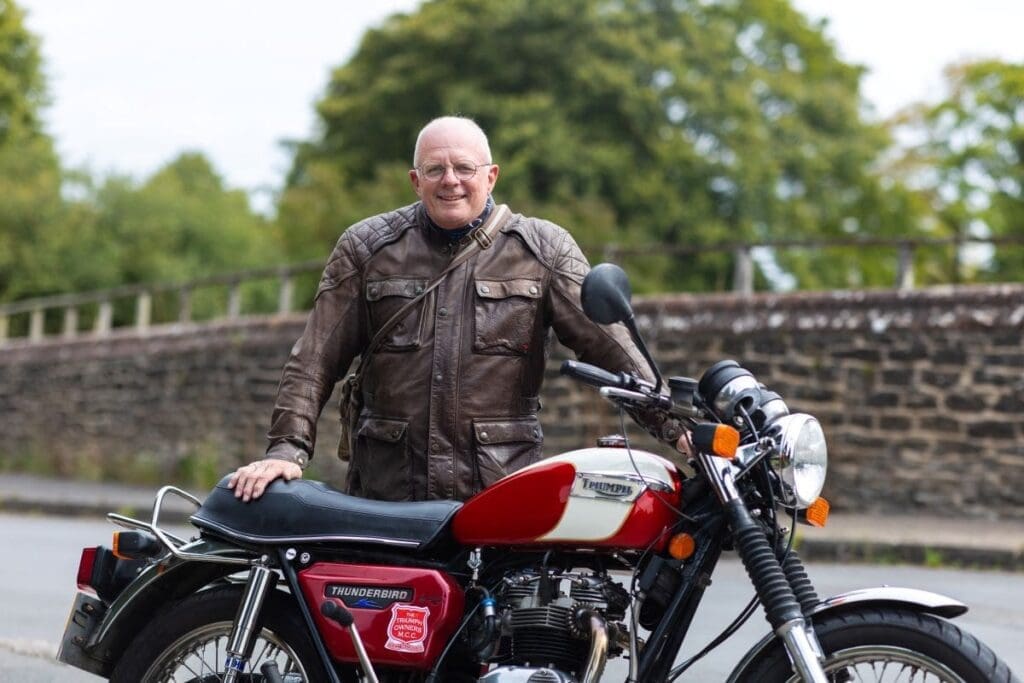
Owner’s story
Tim Ainslie is a retired senior physiotherapist and a serious long-haul rider, recently returned from an organised tour up into the Peruvian Andes on Royal Enfield EFI Bullets. We’ll let him take up the story. It begins, counter-intuitively, with a Japanesebike blow-up:
“In 1979 I was hunting for a replacement for my Honda 250G5, which had suffered a catastrophic engine failure. I was offered a 1969 Tiger 100, a barely running wreck. My expectations for Triumph ownership were pretty low, and not helped by the drive chain snapping during my first ride.
“The T100 was a revelation, however, unrefined, but exciting. Even when the drive side main bearing seized, I just accepted that this was what happened with old British bikes.” Tim’s enquiring mind and can-do attitude meant that he soon began working on the twin himself, and learning how to overcome the problems. “I learned so much during my ownership, and am forever grateful to my parents for letting me rebuild the engine in my bedroom, and for my friends with engineering backgrounds who gradually taught me engine maintenance, and how to put Triumphs together so that they are reliable and leak-free (most of the time…)
“The T100 was a great bike, with a free-revving engine and a fine-handling chassis. I began to discover the network of Triumph parts suppliers across West London, nearly all of which have disappeared now. Reg Allen in Hanwell, run by the late Bill Crosby and his family, became my go-to parts supplier and source of Meriden information.
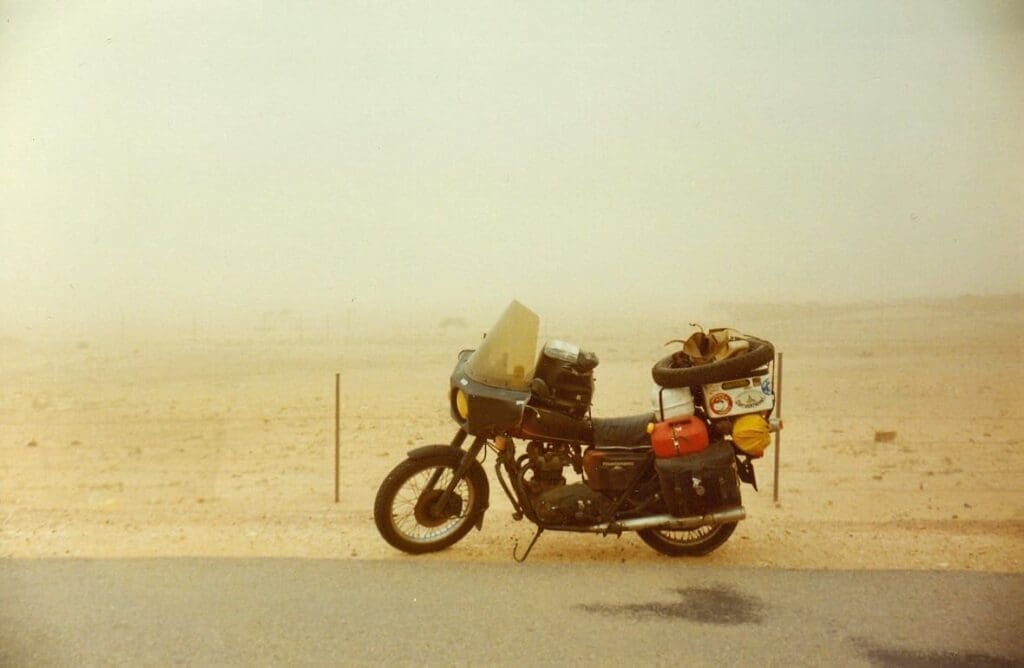
“Having sold the T100 I bought a lovely 1979 T140 Bonneville from Bill, but despite riding all over Europe on it, I still hankered after the better handling T100 and its responsive motor. I knew what I wanted as a replacement, as I had fallen for the TR65 at the 1980 Birmingham Motorcycle show – the gorgeous smoked red paint job, the 650cc engine with its black cases, and the two-into-one exhaust. I took a photo, thinking that would be the closest I would ever get to owning one.
“Then the Bonnie was stolen. With a cheque from my insurance company, I found a new TR65 in a branch of discount dealers Motorcycle City. It was just what I was after, having the later style UK tank, a chromed two-into-two exhaust system, metallic orange ‘Smoked Olympic Flame’ paint, and a rev counter. Mine for the princely sum of £1680.75, on May 1, 1983.
“It was my daily transport from 1983 to 1994, being used in London to get me to the various hospitals I worked at, and taking me on trips during my holidays, including a ride down to Morocco and Algeria in 1986. From 1994 my life became consumed by work and family life. Bringing up two children was a brilliant experience but left little scope for riding the Thunderbird, which gradually rotted away under a polythene sheet in the garden.
“In 2009, now divorced and with the kids grown, I began the process of bringing the Triumph back to life. With the engine completely rebuilt, in 2010 I rode it down the road with an enormous smile on my face. The speedo and mileage seemed to change from year to year, sometimes having wound back, so at a best estimate the bike completed 50-60,000 miles up until 1994; since being back on the road it has covered 35,000 miles, including Lands End to John O’Groats, and going down to Brittany in France. It is still my greatest pleasure riding it around the country, where the chassis and engine are a perfect partnership for travelling the A-roads of Britain.”
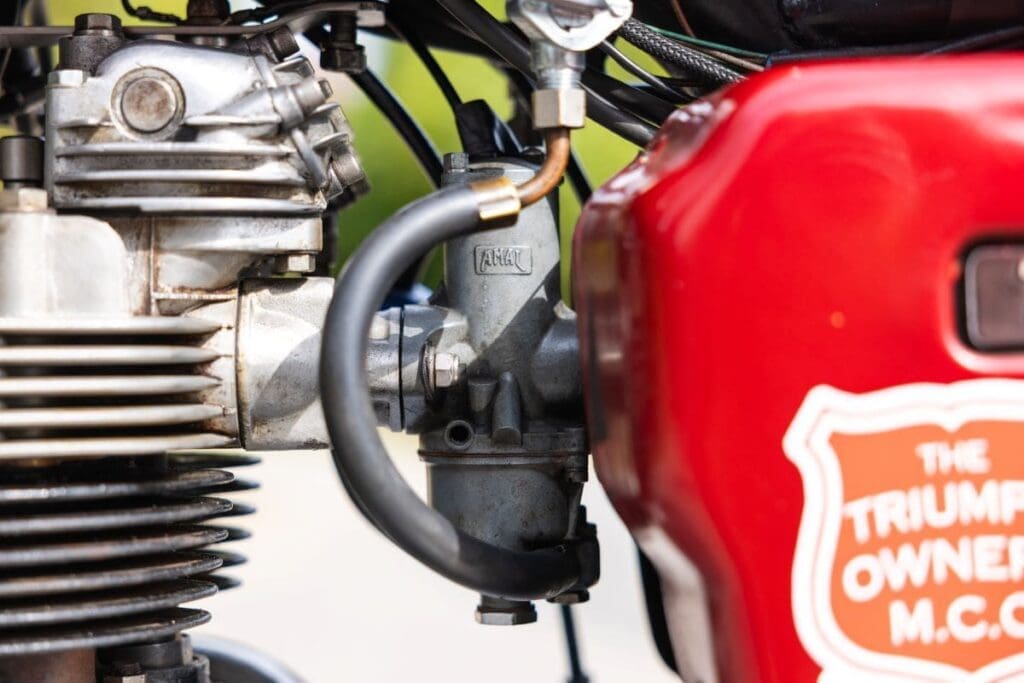
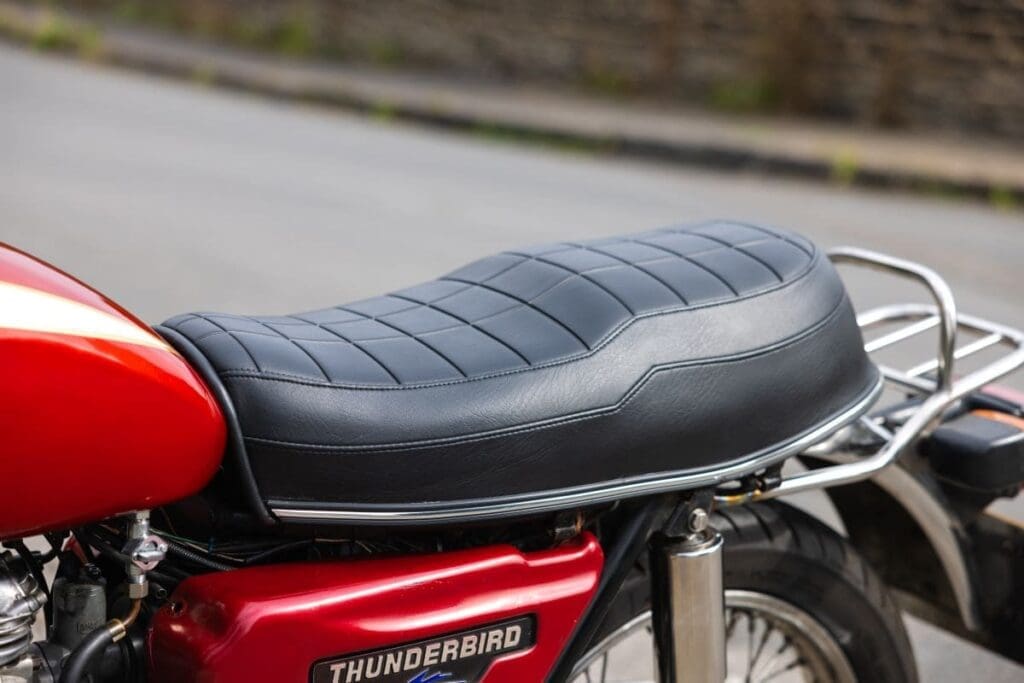
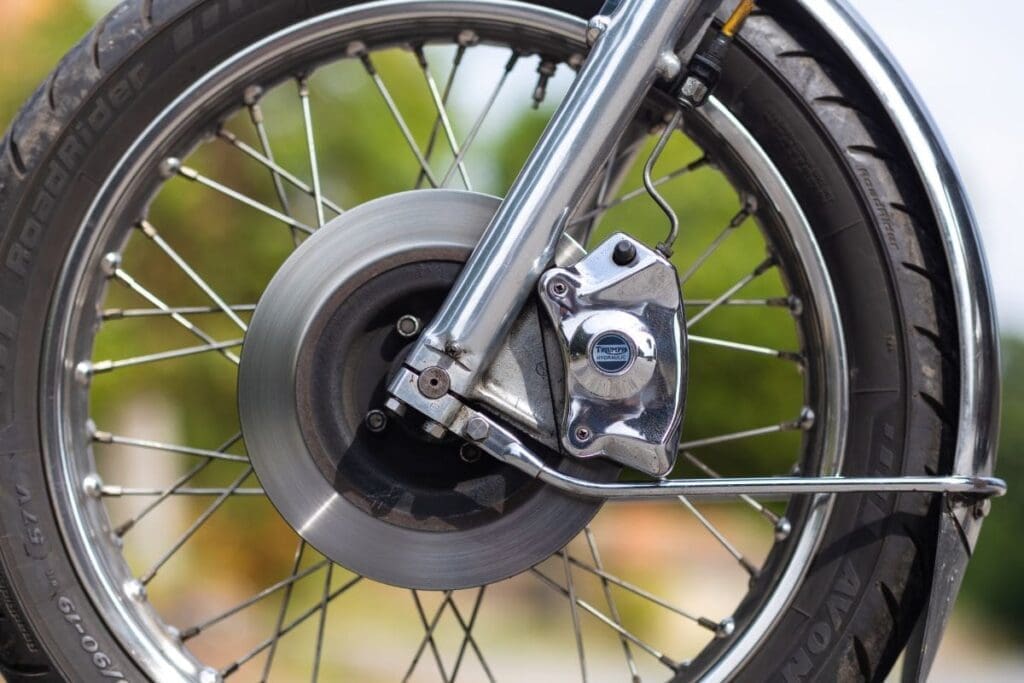
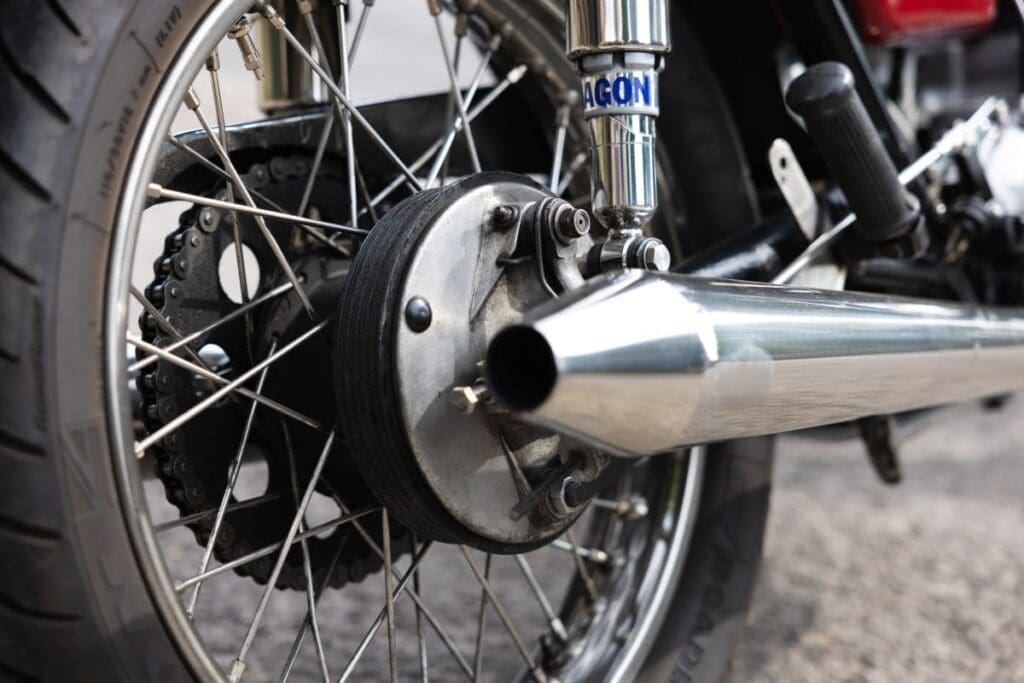
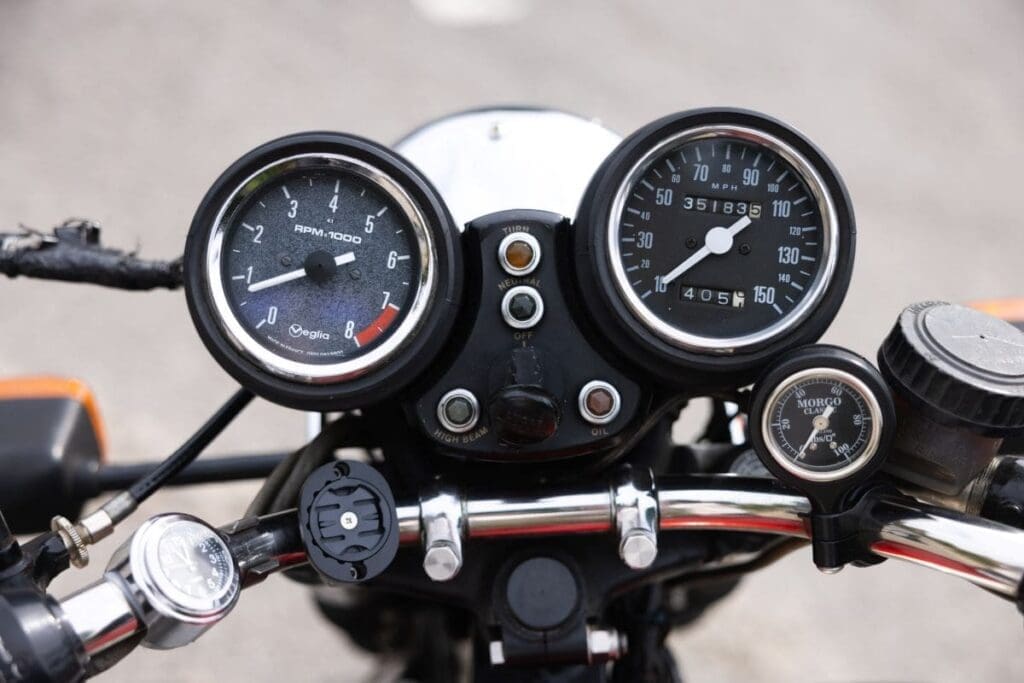
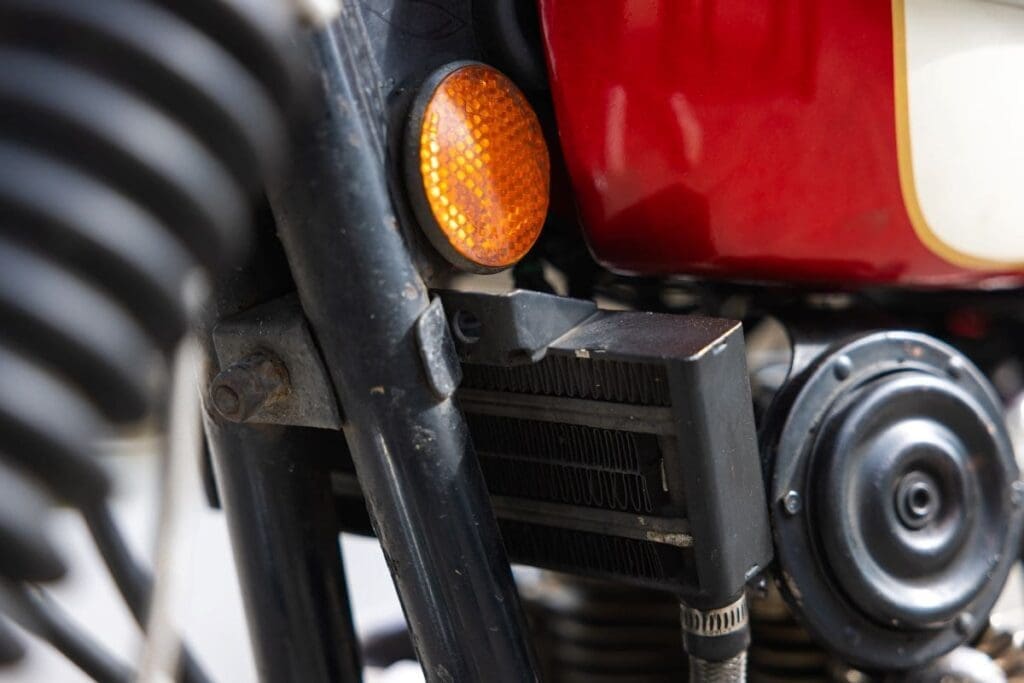
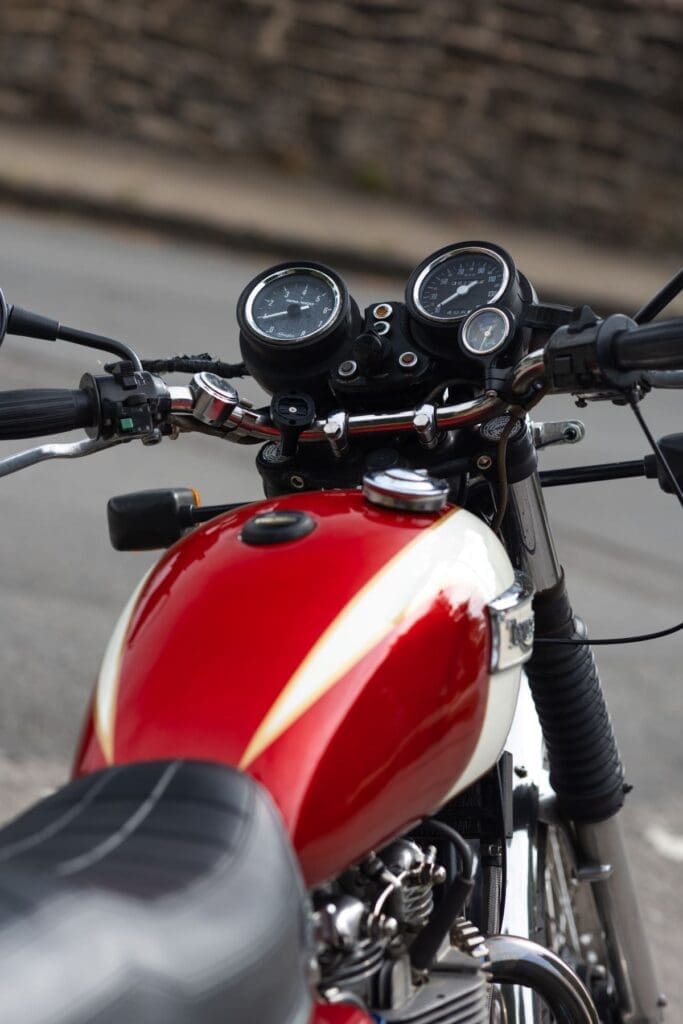
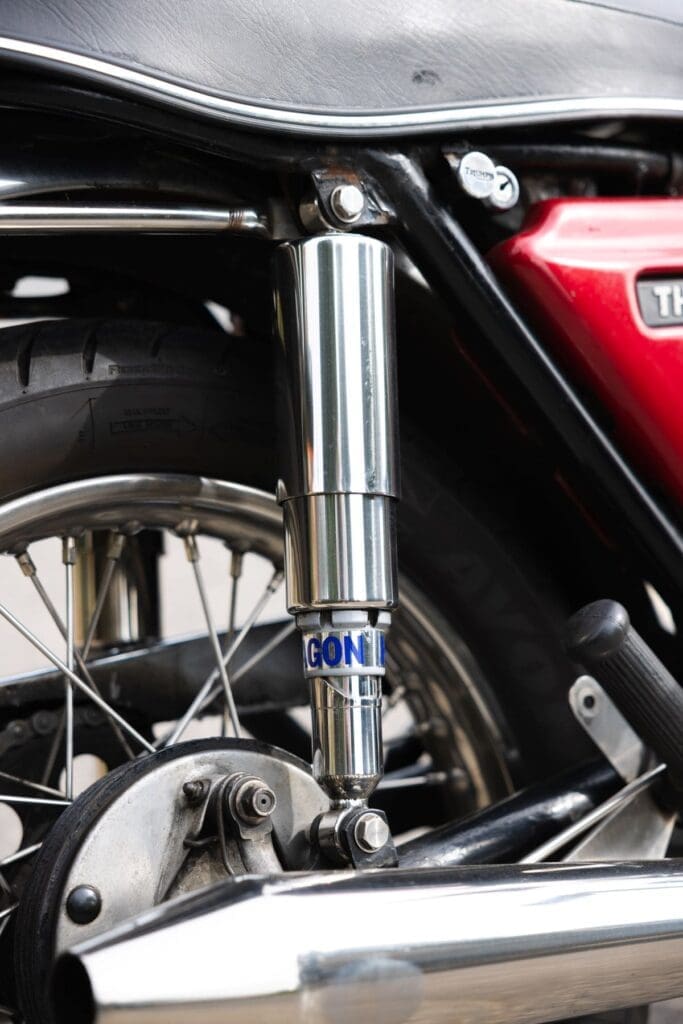
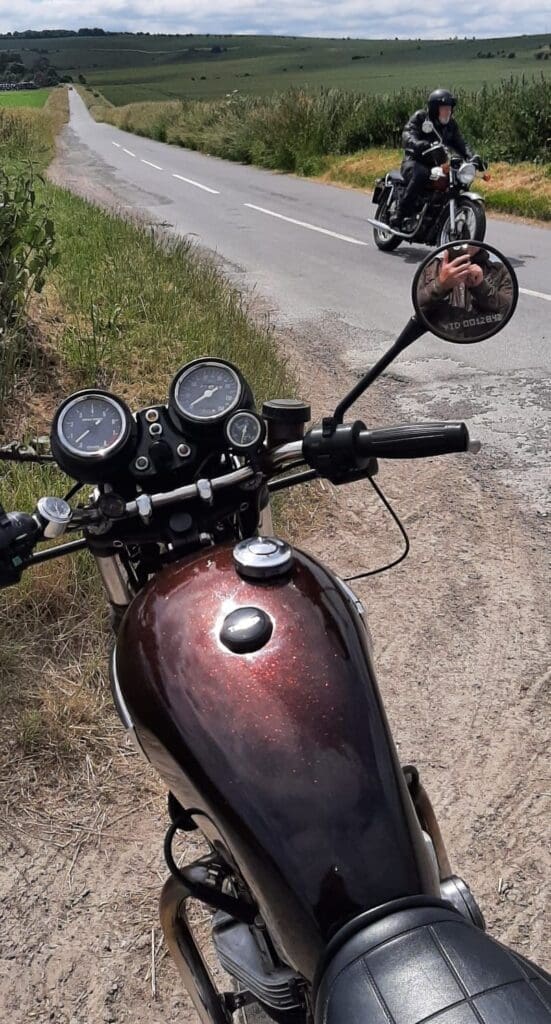
Making good better
For a Triumph twin to achieve those mileages, regular maintenance but also some aftermarket improvements were almost inevitable. The TR65 already featured many uprates in common with the later T140s, such as 1980’s four-valve oil pump and 1981’s lighter clutch set-up and higher output alternators.
With his 1986 Moroccan/Algerian trip and its higher temperatures in mind, Tim fitted a Lockhart oil cooler with stainless braided oil lines from Bill Crosby, which also increased the oil-in-frame’s minimal four pint oil capacity (in the event he got stuck in a severe sandstorm in Algeria, and was only helped out by a friendly local). The 10-inch front disc brake has also been treated to Goodman braided hoses. The original TR65 seat had been an uncomfortable economy version; Tim substituted a NOS one from a Triumph US export 750.
An in-line fuel filter and a spin-on cartridge oil filter were added, plus a K&N air filter. After two Wassell oil seals had failed, he fitted a Morgo oil pressure gauge, together with an SRM stainless steel oil pressure release valve. The Morgo gauge is matched on the handlebars by a small analogue watch. The release valve is one of several stainless fixtures, including the drum rear brake’s rod, as the Triumph is ridden in winter. The wheel rims had been replaced while the bike was off the road; Tim, with help from a friend, laced them himself with spokes from Devon Wheels (Tel: 01769 581700). The Thunderbird now runs on Avon Roadrider rubber.
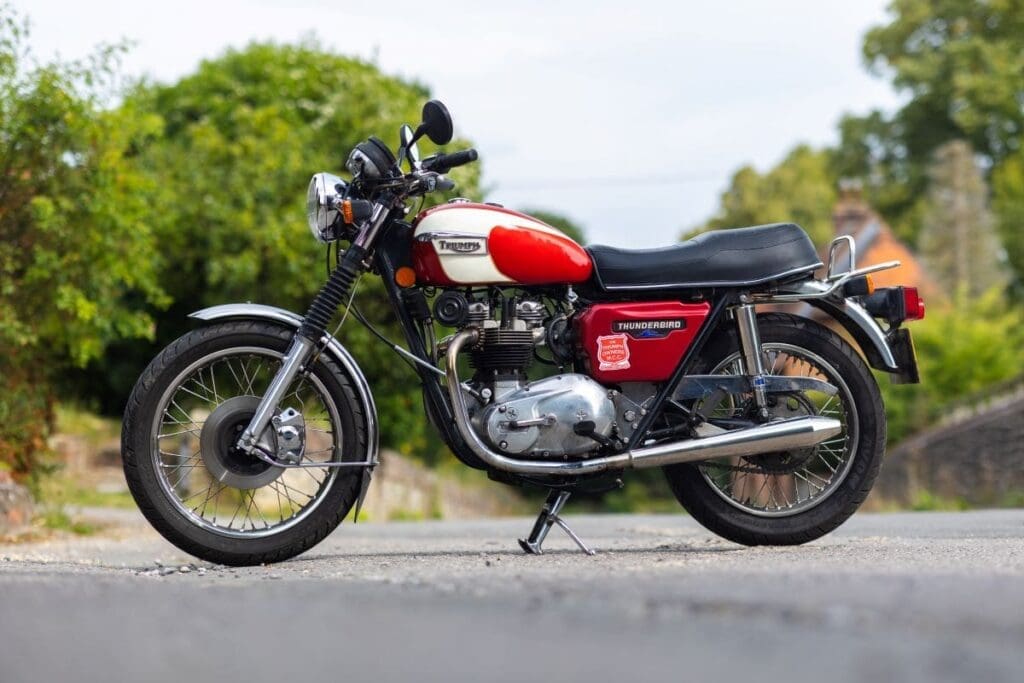
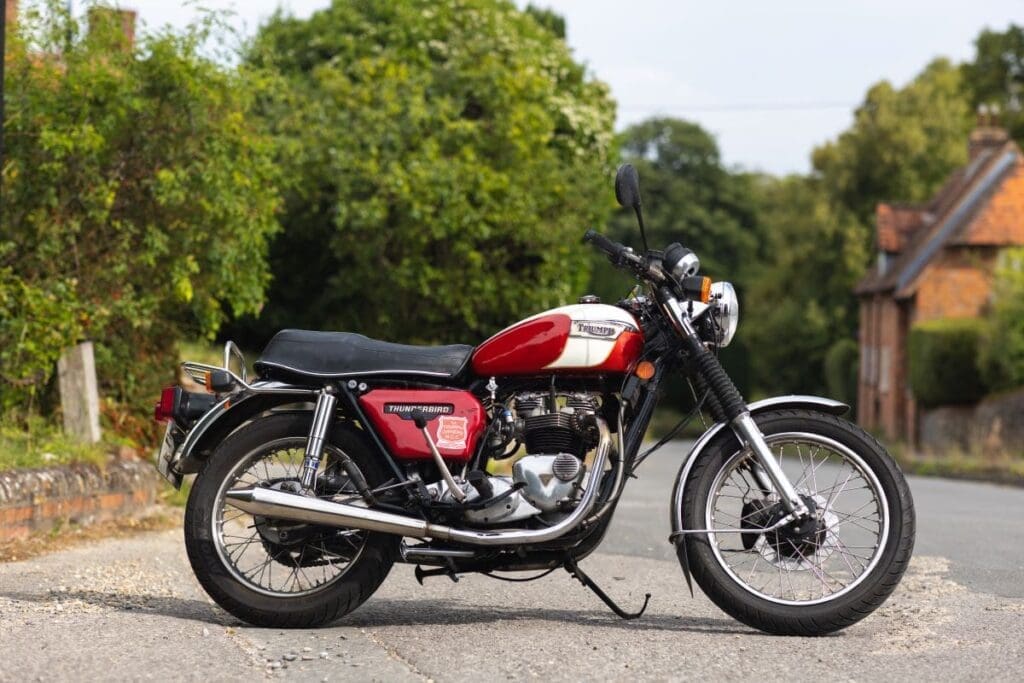
The kick-start is currently a slightly longer one off a T160 Trident, as Tim finds it tucks nicely out of the way, while the extra length gives more leverage while kick-starting. He has remounted the ignition coil under the side-panel, to free up more space for tools under the seat. An aftermarket version of the small chromed rear rack fitted to T140s is a practical touch, though Tim has also retained the original grab-rail. He has fitted a Cibie reflector in the headlamp to improve night-time visibility.
Over the years he has acquired no less than four petrol tanks for the Thunderbird, the US-style one featured here being an Indian-built version he purchased a few years back for £150, painted but without badges or petrol taps. “I had to tap out the petrol tap holes,” said Tim, “and the right-side badge is mounted slightly too low,” but otherwise he has no complaints. The colour scheme is non-standard for a TR65, but looks well. The stainless, fully shrouded Hagon rear units may be a little too much bling, but do mean that their springs are weather-proofed.
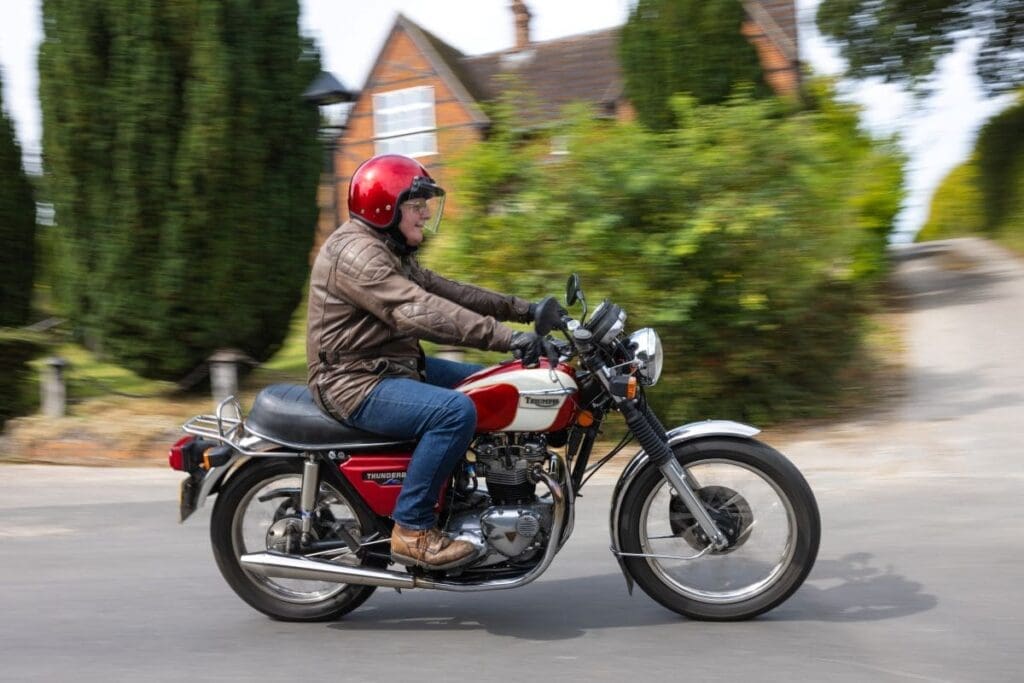
Riding the ’Bird
I had been looking forward to a blast on Tim’s TR65, and I was not disappointed. The 650 started first kick. On a fine, late summer day, the deep green lanes beckoned from the hamlet where we had mustered. The first of the twin’s five gears engaged smoothly and we were off, to a stirring soundtrack from the aftermarket peashooter silencers.
I headed for the nearby A-road, and over a couple of straight miles, gave the Triumph the gun. And it responded smoothly and remarkably briskly – there was no discernible single carb penalty here, as we ran slickly up through the gears and quickly hit the legal limit in top, with plenty more in hand. When a car pulled out unexpectedly from a concealed side-road, the disc front brake proved excellent, with no grabbiness, though the rear brake pedal set-up made it somewhat inaccessible. Comparisons with my own 1970s 650cc Bonnie (see last month) were inevitable. Counter-intuitively, the saddle height felt a little taller than my early 1972, interim-framed model, I think due to that thickly padded, comfortable later dualseat; though it was no problem, as I could still get both my feet on the ground at a standstill.
After giving the free-revving twin its head, I turned off onto a circuit of lanes which I knew would lead me round to the hamlet again by the back way. These were really deep country lanes, narrow, tree-lined, twisting, poorly surfaced and undulating, some with grass growing up the middle. The Triumph’s excellent, precise handling and roadholding were quickly very welcome, as was that smooth five-speed gearchange, which put you just where you needed to be on the power band to finesse round the blind bends, but with instant pick-up in hand.
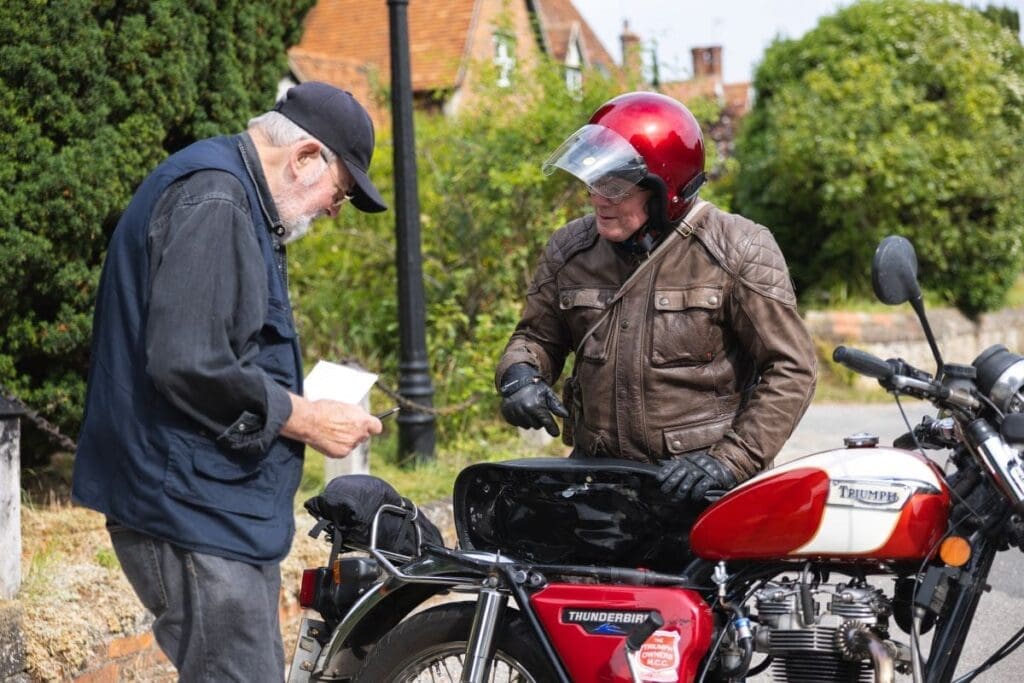
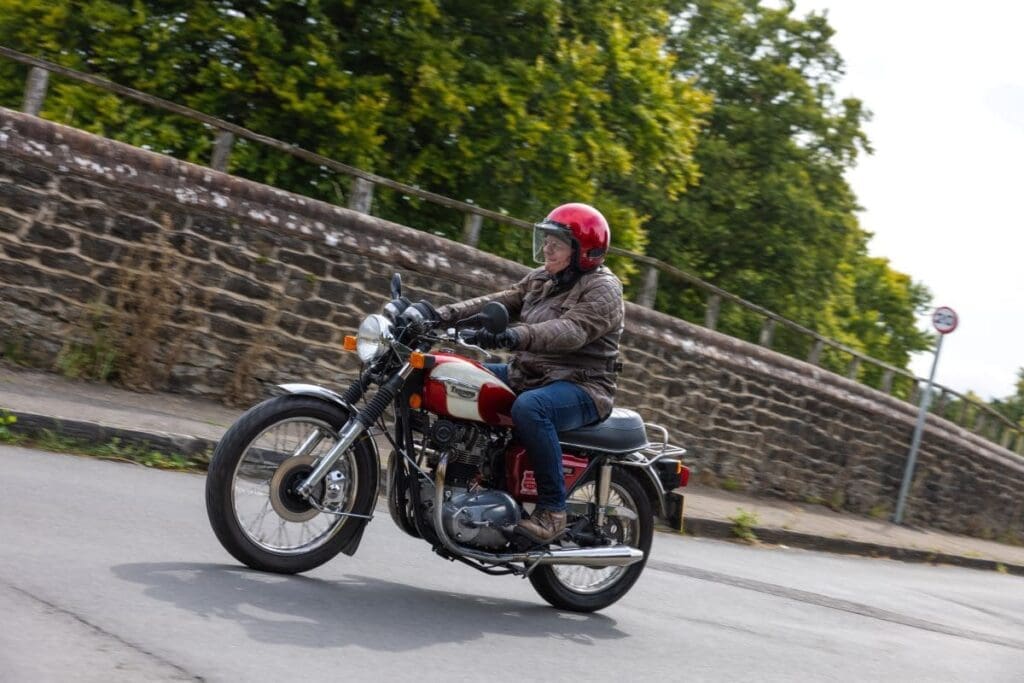
Sure enough, one sharp, narrow, blind corner abruptly revealed a horsewoman on the far side, but thanks to the front brake and the flexibility, there was no drama as I throttled back and changed down to a second gear tickover, crept slowly past, and got a ‘thank you’ wave in return.
The classic Triumph pull-back ’bars had a different feel to the cowhorns I favour, but the way they put your weight onto the front end was useful under those circumstances. The position of Tim’s rubber bush-mounted footrests felt more comfortable than my own, though the right one was still further forward than the left.
Overall, as I finally drew to a halt by the hamlet’s memorial cross, I ended up very happy with the ride. From the solid basis of the smooth-running, single carb TR65 Thunderbird, Tim Ainslie has built up the ideal Triumph twin for many of us, a really good all-rounder.
